Submitted by WA Contents
BIG revamps Aqaba Container Terminal in the light of decarbonization efforts in Jordan
Jordan Architecture News - Nov 17, 2022 - 14:58 3683 views
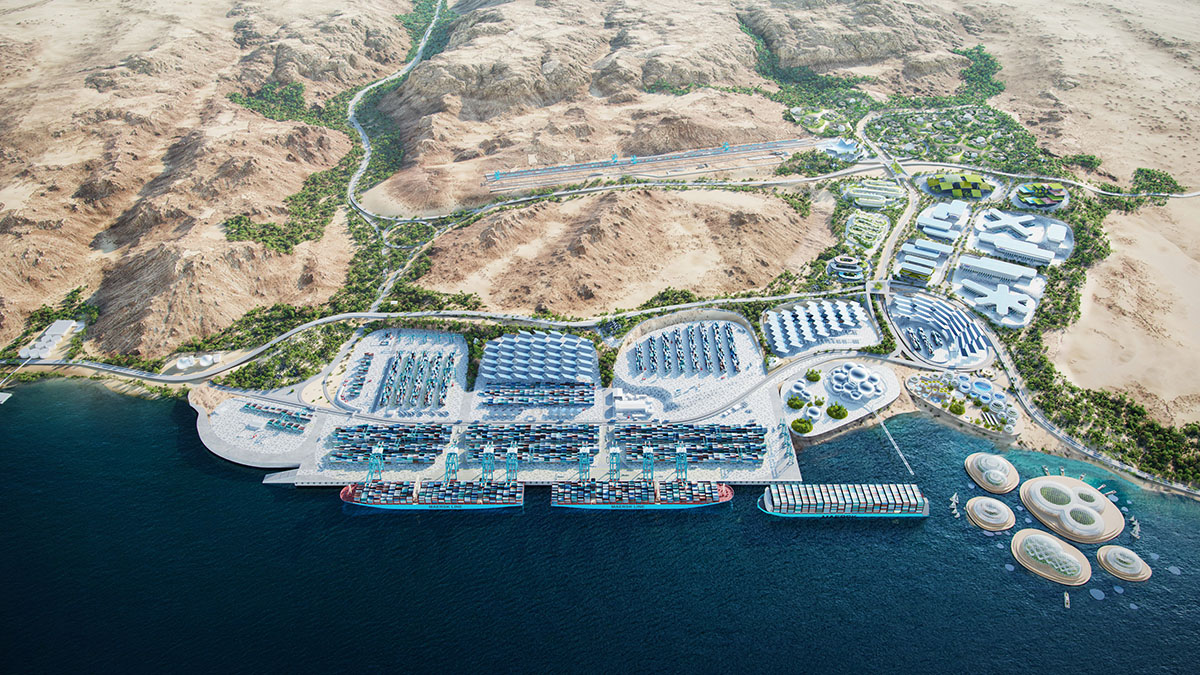
BIG has unveiled design to revamp the Aqaba Port Terminal in the light of decolonization efforts in Jordan, aiming to reach a net zero emission target for 2040.
The masterplan, called APMT - Aqaba A. P. Moller Terminal, encompasses a total of 3,000,000-square-metre area and is conceived as "a green transformation", which will connect shipping infrastructure to local communities.
BIG's large-scale transformation is the first step towards decarbonization of major ports and container terminals, which grew out of APM Terminals and Maersk in reimagining the future of the shipping industry.
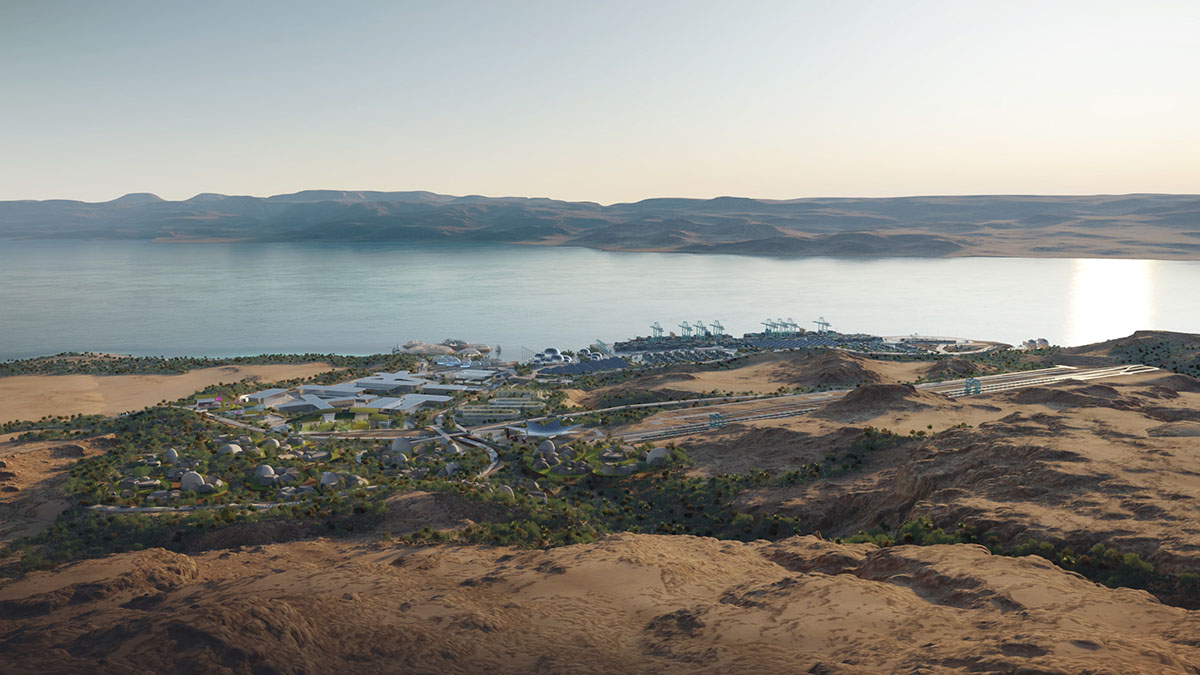
APM Terminal’s ambition was to optimize and decarbonize the port and surrounding logistics, in this sense, BIG has devised a spatial framework for the green transformation of Aqaba Container Terminal.
The new plan is aimed to be a gateway to the distribution network of Jordan, the Levant and beyond.
The vision, based on Environmental, Social and Governance (ESG) principles at the core, is derived from different strategic approaches at regional scale - starting from the terminal refurbishment, expanding to the logistics functions in the immediate surroundings, and lastly, connecting to the wider port’s community and natural environment.
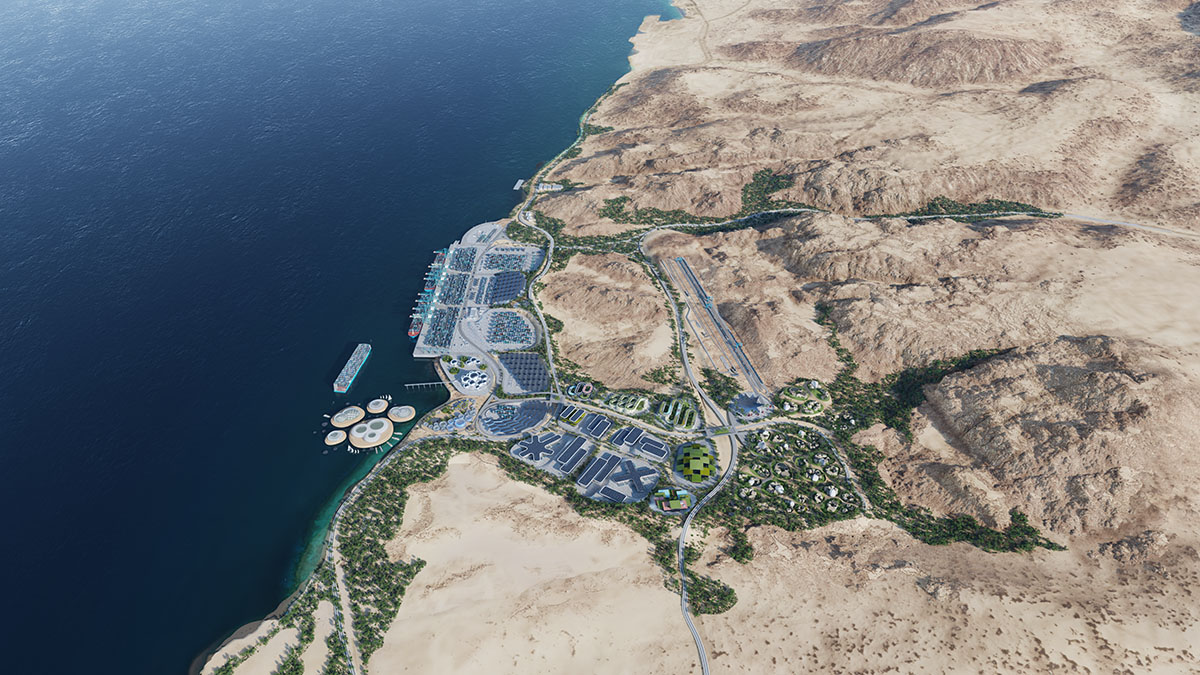
Maritime infrastructure as a driver for economic, social and environmental sustainability
"Historically, cities have developed around ports and been a social hub for transportation and trade," said BIG in its press statement.
"Today, however, most ports have been pushed to industrial zones on the periphery of urban developments in order to isolate the noise, dirt and the high safety standards that are biproducts of the maritime industry."
Based on the existing problems and typologies, BIG's framework for transforming Aqaba Container Terminal aims to bring life back to the port.
According to the firm, this will be achieved by decarbonizing the terminal's infrastructure, creating new synergies with local businesses and communities. The masterplan will also incorporate new strategies for environmental restoration and nature-based solutions.
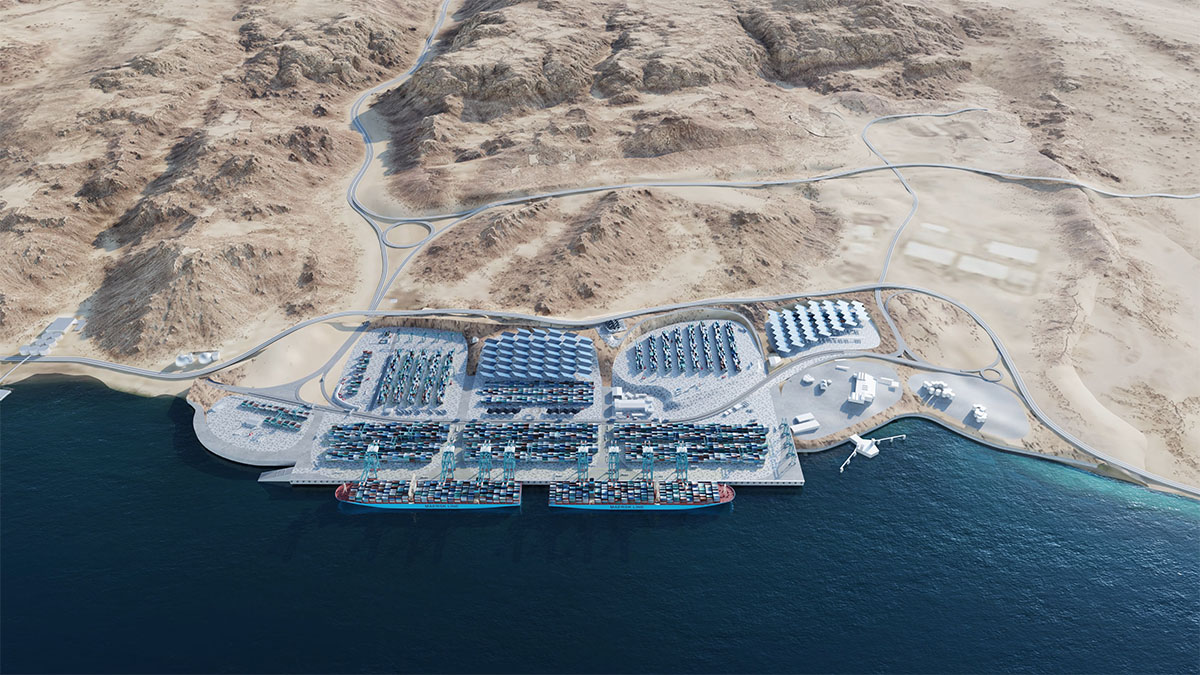
Taking safety and operational efficiency into the heart of design, BIG's planning approach connects social, economic and environmental strategies into a holistic vision, for the terminal and beyond.
"When Maersk and APM Terminals invited us to help reimagine container ports as hubs for green growth in the future, we were humbled, and extremely motivated. The past years, we have worked on a Plan for the Planet – a masterplan where we’ve attempted to plan pragmatically for a sustainable, human presence on Earth," said Bjarke Ingels, founder and partner of BIG.
"This collaboration has allowed us to wander well beyond our normal territory and dive head-first into our passion for using architecture and planning to solve large-scale, complex challenges."
"For us, this framework is a huge step for sustainability and in rethinking our profession to work in the often-overlooked parts of our cities and activate them to play a crucial role in the urgent and necessary energy transformation of our society," Ingels added.
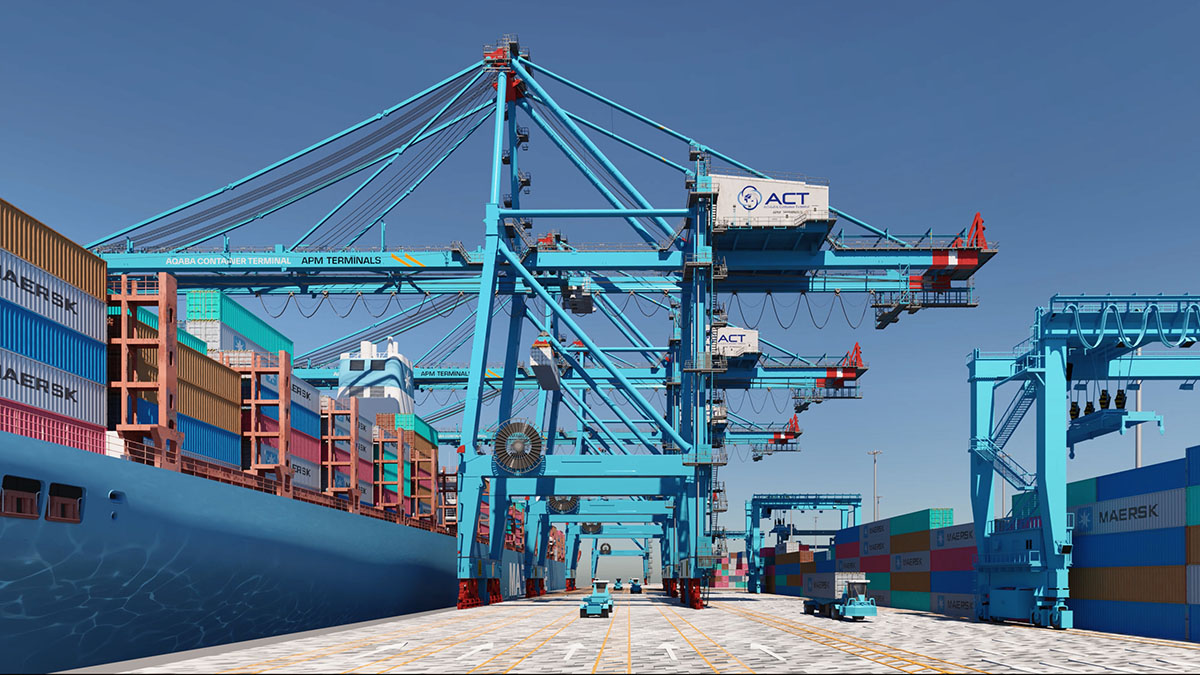
View from Electrified-equipment
According to the firm, in the future, ports can once again become the center of urban life and connect land and sea through growth and innovation.
In parallel with neutralizing carbon emissions, the reduction of long distances between the yard, custom facilities, logistics and distribution hubs, will turn the terminal into an attractor of innovation, research, offices, and commercial facilities.
Local communities can connect with industrial businesses through training centers, recreational spaces, and parks, transforming the grey parts of our cities into green hubs.
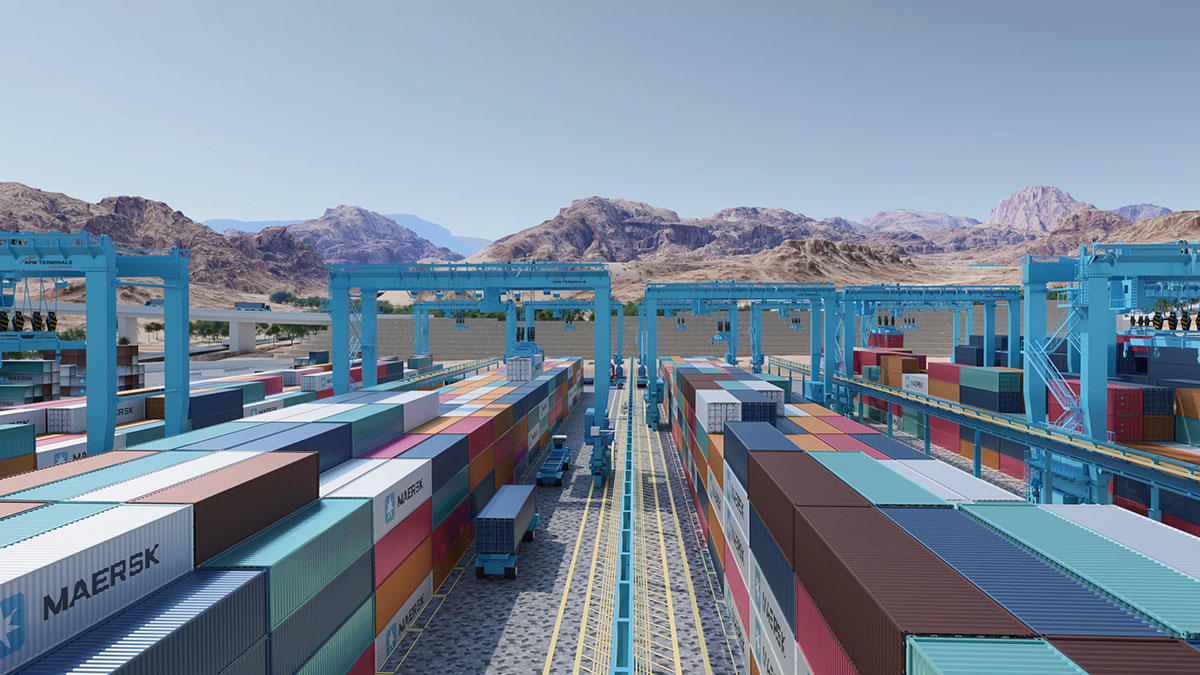
View from Yard-refurbishment
"Over the last decades, industries have driven economic growth, but also contributed to social inequalities and severe environmental impact. Aqaba Container Terminal is an example of how cleaner, quieter and safer infrastructure can create new forms of sustainable urban environments," said Giulia Frittoli, partner at BIG.
"As an urban planner and landscape architect the collaboration has been a unique chance to explore the hidden potential behind industrial sites and rethink infrastructure as a catalyst for urban, sustainable transformation."
"Developing this vision in collaboration with Maersk, APM Terminals and ACT has been an incredible opportunity to collaborate with industry leaders on the design and innovation of the global maritime infrastructure, which we all rely greatly on," Frittoli added.
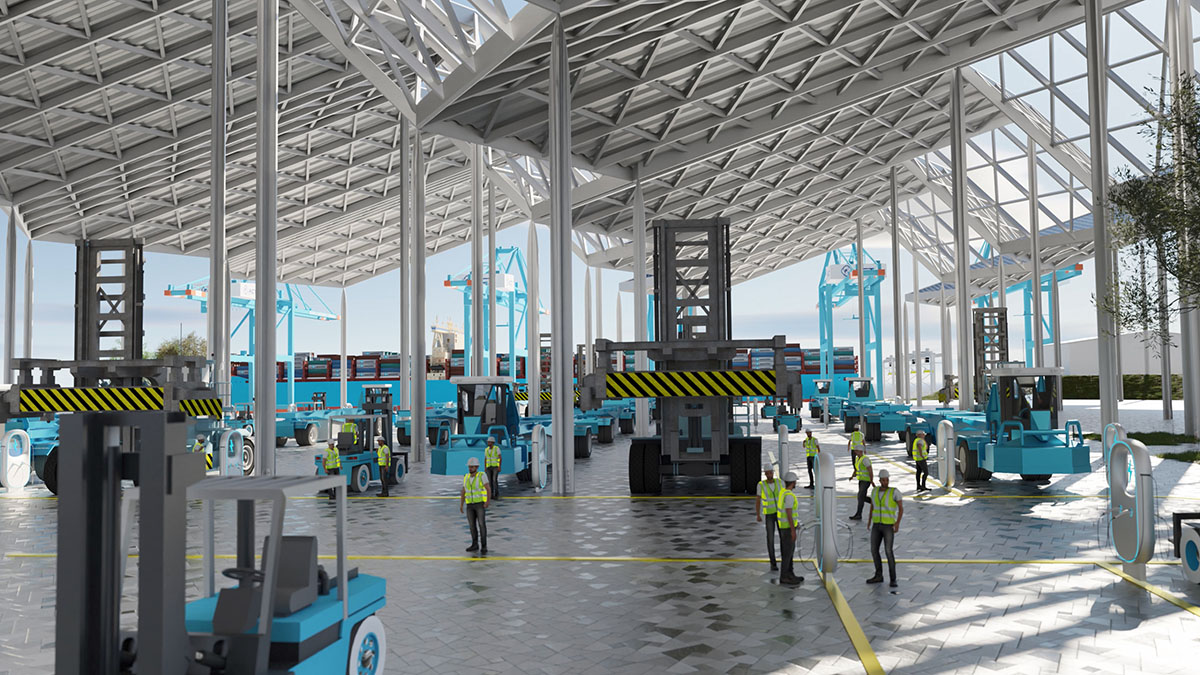
View from Charging-facility
Decarbonizing Aqaba Container Terminal and expanding the port beyond its borders
The design of terminal consists of solar installations and canopies to be able to allow for zero-emission port functions and reliance on fully electrified cranes, vehicles and charging stations.
To provide efficient operations, the design team implements yard refurbishments with state-of-the-art technology and use sustainable pavement treatment while creating comfortable spaces for workers.
The plans also relocate the custom facility closer to the port, while the clearance process is optimized and directly linked to nearby logistic facilities - an area where trade opportunities will be offered to the wider economy by connecting with local businesses.
Bringing together agents and shippers will ensure faster goods distribution, while training and innovation centers develop Jordan’s next generation of logistics professionals.
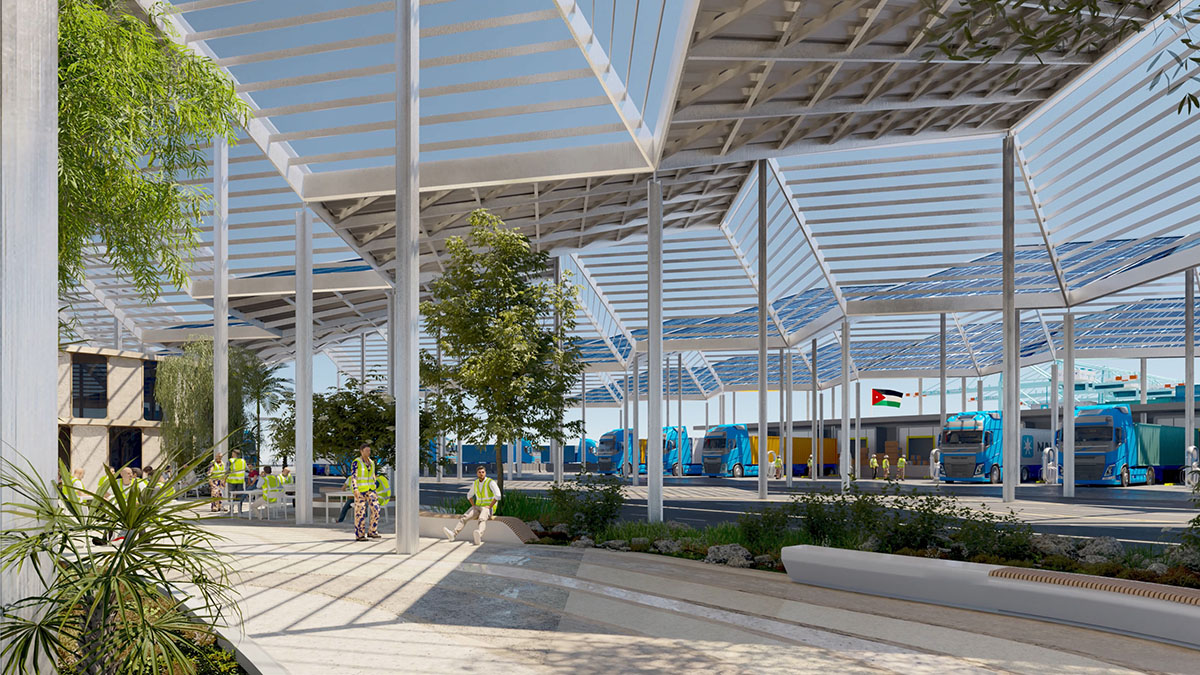
Custom-facility
"Aqaba is considered one of APM Terminals’ major strategic ports, and an important gateway to the Levant region and beyond," said Keith Svendsen, CEO, APM Terminals.
"To reinforce our long-term commitment to Aqaba and to Jordan’s 2030 Economic Modernization Vision, we have developed a meticulous plan for enhancing Aqaba’s competitiveness both regionally and globally including a net zero emission target for 2040," Svendsen added.
Video courtesy of BIG
The transformation of the Aqaba Port Terminal is expected to be completed in 2040.
BIG's new science center has broken ground at the Claremont McKenna College, one of the nation’s top liberal arts colleges, in California, United States. BIG and Carlo Ratti Associati also completed biophilic CapitaSpring Skyscraper in Singapore.
Project facts
Name: Aqaba Container Terminal
Size: 3 km2
Location: Aqaba, Jordan
Collaborators: APM Terminals
Project Team
Partners-in-Charge: Bjarke Ingels, Giulia Frittoli
Design Lead: Filip Radu
Team: Filip Radu, Jakub Wlodarczyk, Tania Farcas, Daniel Vanderhorst, Shane Dalke
All images © Ping-Pong Visualization, courtesy of BIG.
> via BIG
